New Business Broadband Study Highlights Challenges and Opportunities for the Capital Region




Broadband for Business: A Path Forward for the Capital Region
For too long, businesses in the Sacramento region have struggled with broadband and Internet deficiencies. It hurts business operations, workers, bottom lines, and the overall economy.
In a first-ever assessment of these conditions, Valley Vision has documented on-the-ground digital hardships and realities for businesses in the four-county region. The new report, “Broadband for Business: A Path Forward for the Capital Region,” identifies connectivity challenges and gaps for businesses in Sacramento, Yolo, Yuba, and Sutter counties, and provides recommendations and resources for solutions.
While the research is specific to the Sacramento Capital Region, the findings and recommendations have relevance statewide and nationwide. Usually, research into digital inequities focuses on household and residential connectivity. This study extends those inquiries and concerns to the business community and identifies business-centric needs, challenges, opportunities, and solutions.
The work was supported by a grant from the U.S. Economic Development Administration. The project was designed to improve broadband Internet access and usage for businesses in the Capital region. It focused particularly on smaller minority-owned and women-owned businesses, farming operations and businesses in rural communities, and businesses in aging commercial corridors as well as newer developments.
The need for the project was spotlighted by the COVID-19 pandemic, which showed that businesses did not have uniform access to reliable and affordable broadband service, nor the digital skills and training needed to thrive. The work of the project is an outgrowth of the Greater Sacramento Region’s Comprehensive Economic Development Strategy for 2020-2025, known commonly as The Prosperity Strategy.
The project’s findings and recommendations were based on survey results, data and mapping research, literature reviews, and interviews and case studies. Data and mapping research included a first-ever overlaying of local data for areas zoned for business uses with data from the California Public Utilities Commission showing locations with inadequate broadband service. The maps developed by this project provide a new and granular level of data and information not previously available, and a roadmap for where solutions should be focused.
Key findings include:
- Conditions vary widely.
- Getting accurate information about available services can be difficult.
- More choices and competition are needed among broadband providers.
- Service is often unreliable and speeds are often too slow for business needs.
- Much of the need is hidden.
- Businesses need more digital training and education.
- Promising strategies, tools, and resources are available.
The report provides recommended strategies, tools, and resources for all who have a role in remedying the situation, including:
- Governments
- Businesses
- Groups that serve businesses such as Chambers of Commerce, Farm Bureaus, and Property and Business Improvement Districts
- Internet service providers
Valley Vision worked with many partners on the study, and is grateful for their inputs and support. Valley Vision is a nonprofit civic leadership organization that has managed many projects to advance economic vitality in the Sacramento Capital Region over three decades. Valley Vision manages the Connected Capital Area Broadband Consortium, which is funded by the CPUC and serves as a resource hub and catalyst for broadband solutions.
For more information, contact Navreet Hundal, navreet.hundal@valleyvision.org.
Planting the Seeds of Resilience: Listos California
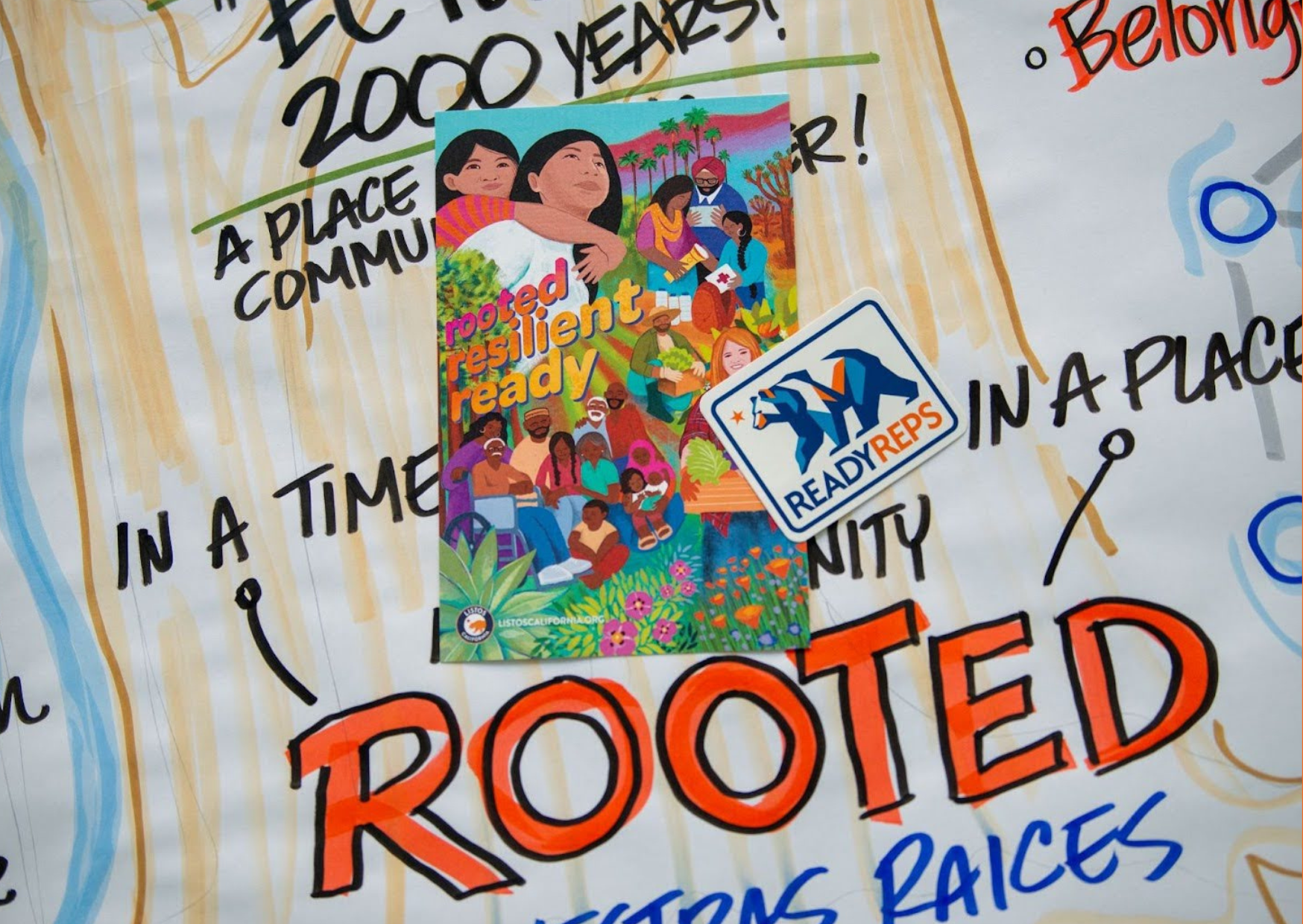
Initiated in 2019, Listos California’s goal is to provide culturally competent materials to all Californians for disaster preparedness, including earthquakes, floods, and wildfires. Utilizing community-based organizations, Tribal governments, and Community Emergency Response Teams (CERTs), Listos Califonia has engaged millions of Californians with low incomes, disabilities, language barriers, older adults, and other highly vulnerable populations with culturally and linguistically appropriate support through a grass-roots, people-centered approach.
Valley Vision has been a key partner to Listos since its inception. Serving as Listos California’s backbone organization, Valley Vision collaborates to coordinate the work of creative, strategic, and programmatic partners to create and distribute culturally appropriate educational resources to Listos California grantees and all California residents. Together, our goal is to empower vulnerable individuals and strengthen community resilience across the state in the face of disasters.

The Office of Community Partnerships and Strategic Communications (OCPSC), like Listos California, recognizes the role that community partners have in reaching at-risk communities to make them resilient in the face of uncertainty. On April 24 through April 26, 2024 in Sacramento, Listos California partnered with the Office of Community Partnerships and Strategic Communications (OCPSC) to jointly host the Rooted. Resilient. Ready. 2024 Statewide Community Partner Convening.
The first-of-its-kind, three-day gathering brought together 600+ trusted CBO messengers from diverse regions of the state, facilitated the exchange of success stories, deepened connections, and shared access to emerging resources.
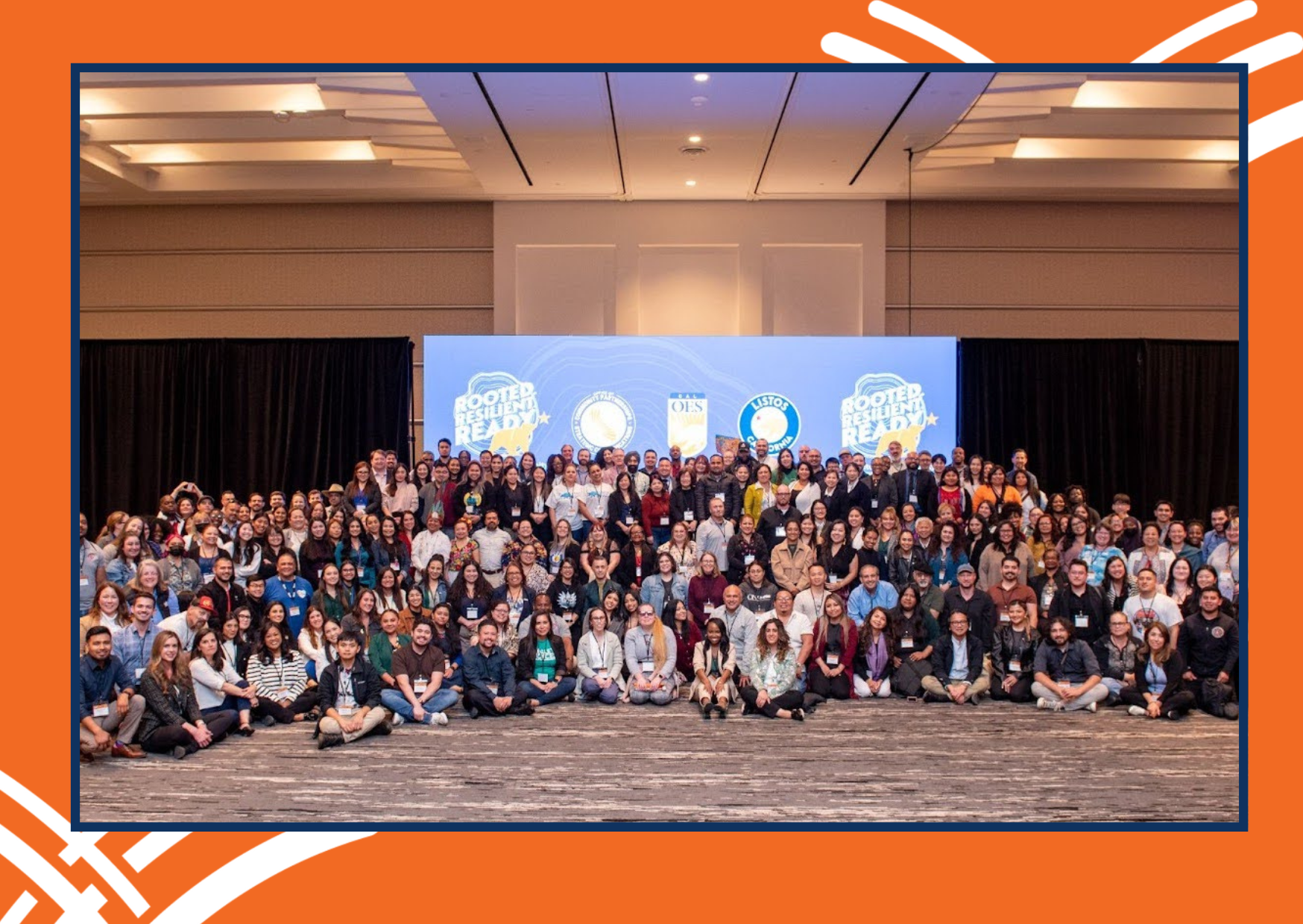
This convening allowed trusted messengers to learn new ways to best communicate emergency resiliency messages to California’s community members most at risk to disasters. Through interactive workshops, participants had the opportunity to collaborate on innovative approaches on grassroots communication strategies and learn about new ways to meet people where they are using culturally competent information.
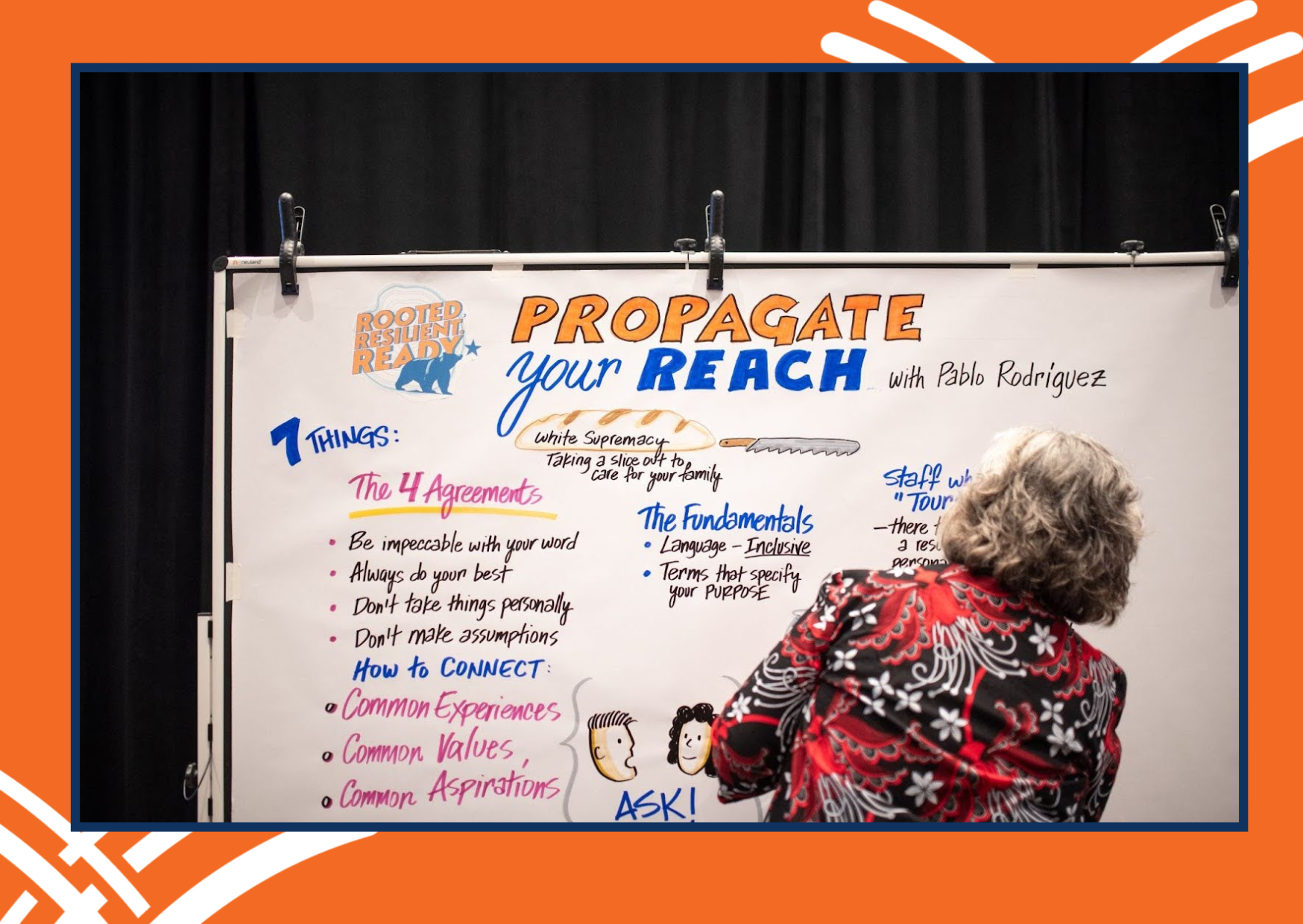
Additionally, participants attended networking sessions to grow their networks of trusted messengers who share critical life-saving information before, during, and after disasters. Anyone who is passionate about informing their community of emergency readiness can become a messenger, including YOU.
Listos California has a suite of in-language resources in over 12 languages available for download and professional printing. Resource topics span over the variety of natural disasters Californians face, mental health awareness, population specific materials and more. Interested in learning simple steps you can take today to keep yourself, your loved ones and neighbors safe? Click here to find out more.
Additional Information
- To view the full list of grantees, along with their service areas and populations served, visit the Listos Atlas.
- For tools and resources developed by Listos California, visit www.listoscalifornia.org
- Join our Movement: Sign up for the Listos California Newsletter to receive news and resources on disaster preparedness, response, and recovery.
- For questions regarding Listos California, email hello@listoscalifornia.org
21st Century Workforce Impact Area: Year In Review

As the workforce intermediary for the Capital Region, Valley Vision connects education and workforce stakeholders around relevant, data-driven research to advance responsive and equitable career pathways. In 2022 Valley Vision’s 21st Century Impact Area produced six industry advisories, facilitated three webinars, convened three community listening sessions, and connected multiple stakeholders to advance in-demand occupations for our region.
The regional advisory topics spanned from the critical need for forestry management careers to growing occupations in biotechnology. Throughout the year, Valley Vision’s workforce team engaged over 500 workforce stakeholders, predominately in education, through these regional advisory meetings. Information shared and connections made in these events leads to informing training investments, creating new and updated educational offerings, and helps the region stay responsive to current and emerging industry trends.
“I REALLY enjoy how these advisories focus on industry and the market trends data to inform and support the work that we do in the classroom. ”
– Career Technical Education teacher
Additionally, Valley Vision hosted two webinars, in partnership with The MetroBusiness Center, to help small business owners expand their talent pipelines and access training resources through the California Employment Training Panel.
During the pandemic, the City of Sacramento and the Sacramento Employment and Training Agency (SETA) convened the Early Learning and Child Care Task Force to coordinate efforts and address issues in the Early Childcare Education industry. Valley Vision helped convene stakeholders around this issue and was commissioned to undertake a study illuminating major issues facing our region’s early childhood education workforce in partnership with the Centers of Excellence for the Greater Sacramento region. This report detailed the current landscape of the industry, upcoming market pressures, and set forth a series of recommendations for further investigation and possible implementation. Additionally, Valley Vision hosted a webinar in December 2022 to bring key industry stakeholders together to review this data and develop strategies to strengthen our region’s early childhood education workforce pipeline.
Valley Vision held a series of in-person events in Sacramento, Yolo, and Placer counties to bring community voices to the forefront of discussion on clean economy careers. These events engaged 67 community members and nonprofit partners to surface challenges and barriers to accessing and thriving in clean economy training programs.
Valley Vision’s 21st Century Workforce impact area is dedicated to working toward a vision of an informed and empowered community where all residents are fully participating in a thriving and inclusive economy. As the dynamics of work continue to change across industries, Valley Vision will continue to serve the region by bringing together research and stakeholders to advance responsive and equitable career pathways to ensure a livable future for all!
To keep up with Valley Vision’s work to advance a future-ready workforce in the Sacramento region, subscribe to our 21st Century Workforce email newsletter!
Sierra Northern Railway & Partners Conduct Public Briefing on Zero Emission Switching Locomotive
Release Date: January 10, 2023

West Sacramento, California – January 5, 2022 – Sierra Northern Railway and partner Valley Vision conducted a public briefing of their Zero Emission Hydrogen Switching locomotive. This webinar had several hundred registrants and was viewed by participants in eight nations, a significant number of states and a large cross section of Federal, State and local regulators as well as a broad cross section of industry insiders.
The online briefing outlined how the Sierra Northern Railway Zero Emission Locomotive will be transformative providing essential services for America’s railroads by proving the hydrogen-fueled units capable of improving air quality, reducing greenhouse gas emissions, and increasing the quality of life in surrounding communities.
To view the briefing visit Valley Vision’s website: https://bit.ly/H2LocoProject or view it on YouTube: https://bit.ly/H2LocoWebinar
The Sierra Northern Railway unit will incorporate hydrogen fuel cells, hydrogen storage, and battery and control technologies that will clearly be more environmentally friendly than existing motive power.
“This is the right path for the future of zero-emissions motive power,” said Kennan Beard, president and CEO of Sierra Northern. “As the lead on this project, we’re confident hydrogen is here to stay and will be the true zero emission solution adopted by the State of California for Switching Locomotives.” By using hydrogen and batteries as Sierra has the switching locomotive will run without any emissions of NOx pollution, carbon or other particulate matter from the unit’s operation. When operational, this unit will stop using as much as 10,000 gallons of conventional diesel fuel per year. Sierra has a stated goal of having the first zero emission switching fleet in the nation and commercializing its technology to lead the industry into the zero-emission future.
Evan Schmidt, Valley Vision CEO stated, “we are very pleased to work with Sierra Northern Railway as they lead the locomotive industry to Zero Emissions within their own fleet, and over time as they commercialize hydrogen locomotives across the State, and ultimately throughout the Nation.”
Sierra Northern Railway (SERA) the technical lead, partnering with GTI Energy as the formal applicant to the California Energy Commission. Other technical partners are Railpower Tech LLC, Optifuel Systems LLC, UC Riverside Center For Environmental Research and Technology, Velocity Strategies, Valley Vision, Ballard Power Systems, WHA International, Southern California Gas Company, the Sacramento Metropolitan Air Quality Management District and The Low-Carbon Resources Initiative (LCRI).
# # #
$3 Million Federal Investment to Boost Digital Inclusion in Lemon Hill

Sacramento State University, Sacramento City College, Valley Vision, and partners will pilot a innovative digital navigator program in the Lemon Hill community of South Sacramento.
Valley Vision is very pleased to partner with California State University, Sacramento, through the Capital Region Coalition for Digital Inclusion (CRCDI), in bringing nearly $3 million in federal funding to our region from the National Telecommunications and Information Administration (NTIA). NTIA, through its new, highly competitive Connecting Minority Communities Pilot Program (CMC), is funding Historically Black Colleges and Universities, Hispanic Serving Institutions and others across the U.S. to address pervasive digital exclusion in minority communities. This major investment will support digital equity in our region through the creation of the Sacramento Regional Consortium for Digital Equity, a collaborative of Sacramento State, Valley Vision, Sacramento City College, Cosumnes River College, and community partners to connect underserved communities with vital digital inclusion resources.
The Collaborative, led by Sacramento State, will develop a Digital Navigator Intern (DNI) program to serve the Lemon Hill community in Sacramento County. Through this program, students will be trained as Digital Navigators and deployed to Community Anchor Institutions working in Lemon Hill. Digital navigators are trusted guides who assist community members in internet adoption and the use of computing devices. Digital navigation services include ongoing assistance with affordable internet access, device acquisition, acquisition of digital skills, and application support. Sacramento State will also establish a Community Engagement Lab that will have essential software and equipment, will be staffed by the DNIs, and provide access for community training or open lab time for both the DNIs and community members.
Through the work of the CRCDI, the Lemon Hill neighborhood in Sacramento had been identified by the Sacramento Employment and Training Agency (SETA) as a priority underserved area based on demographic and economic indicators. This area has the highest poverty rate among communities in Sacramento County with populations of 10,000 or more, and became a focus for this grant. We are invigorated to take the efforts made by the CRCDI to the next level, working with Sacramento State, Los Rios and our community partners to bring digital navigators to our region. Dr. Robert S. Nelsen, President of Sacramento State, commented on this groundbreaking initiative:
“Sacramento State is thrilled that the NTIA saw the value in our proposal to help close the Digital Divide in Lemon Hill. As an Anchor University, we look forward to working with our partners, including Sacramento City College, the Greater Sacramento Urban League, La Familia Counseling Center, United Way, and Valley Vision to promote digital inclusion and improve broadband access. Our work will provide more families with access to broadband and a computer, increase educational attainment, and grow the neighborhood’s economy.” – Dr. Robert S. Nelsen
The project will launch in 2023. Digital navigators are essential to closing the Digital Divide, and we look forward to working with this team of digital inclusion trailblazers to establish transformational and lasting digital equity impacts in our community. With this pilot, led by Dr. Yvonne Harris at Sacramento State and a member of the CRCDI Steering Committee, we also have the opportunity to scale the CRCDI’s digital inclusion efforts, thanks to the support of NTIA. In addition, we thank the California Emerging Technology Fund which provided support in developing the application to NTIA, and is leading a Higher Education Collaborative for CMC grant recipients Sacramento State and Merced College and our evaluation partner, California State University, Chico. We also thank Congresswoman Doris Matsui for her valued ongoing support of our community’s digital inclusion efforts.
More information about this program can be found in press releases from NTIA and Rep. Matsui’s office.
###
About Valley Vision: For more than 25 years Valley Vision has used research to help governments, businesses, foundations and community groups better understand the issues facing our region. We believe that knowing and understanding the facts is the best way to establish a common working foundation for collaborative problem-solving. That’s why Valley Vision conducts, produces and interprets research including scientific public opinion polls, focus groups, community needs assessments, best practice studies and other research tools to bring to light the information local leaders need to improve our communities.
Shortages in Early Childhood Education
New report underscores employment solutions to improve job quality and working conditions
Sacramento, CA – October 26, 2022: Valley Vision and the Greater Sacramento region Center of Excellence released an Early Childhood Education (ECE) Workforce Needs Assessment report detailing capacity and workforce challenges facing the Greater Sacramento Region. This report builds upon the work of the Early Learning and Child Care Taskforce which was created at the direction of Mayor Pro Tem and Chair of the Sacramento Employment and Training Agency Eric Guerra, to develop recommendations to improve access to affordable and quality child care and increase access to career pathways in early childhood education and child care.
The report details a chronic workforce shortage with child care licensed capacity unable to keep up with demand. In Sacramento County, the number of licensed spaces only accounts for one out of every three children aged 0 to 5 years old. A large majority of licensed spaces (88.5% of total capacity) in child care centers in Sacramento County are for preschool-age children, with only 11.5% designated for infants. In addition, the impact of Transitional Kindergarten (TK) will play a significant role in exacerbating the early child care education workforce shortage by increasing overall demand, and creating a need to backfill positions from the existing workforce who may fill these positions.
Denise Lee, Interim Executive Director of the Sacramento Employment and Training Agency (SETA) that administers Head Start for Sacramento County shares: “The challenges outlined in this report are on point with what child care employers, like Head Start, are facing each day. The significant staffing shortages continue to hinder child care providers’ ability to expand service locations to meet demand; to lengthen operational hours for working families; and/or to keep centers/classrooms open on a daily basis so families are not scrambling with little notice. The crisis is real. However, so are the solutions. What is most valuable about this report is a set of recommendations that are actionable by key stakeholders in our community, including SETA.”
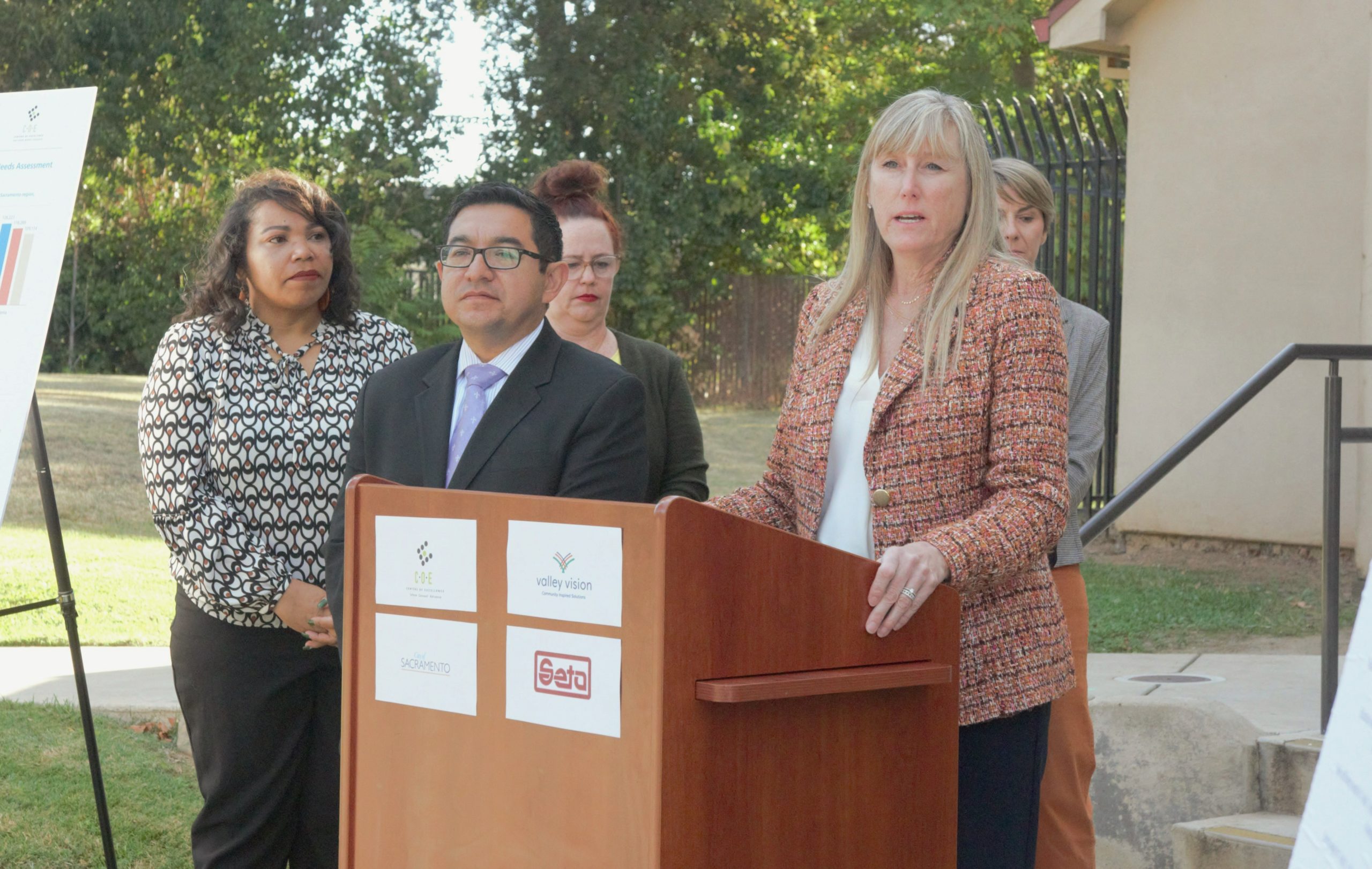
Child care workers and preschool teachers make well below a living wage in the Greater Sacramento Region. Currently the living wage for a one adult and one child household in the region is $37.27. The report found that child care workers in Sacramento County make one third of the living wage with a median wage of $13.74. It identified that preschool teachers’ make less than half of the living wage, with median hourly earnings of $16.68.
Mayor Pro Tem Guerra emphasizes, “Parents are struggling to find child care, year long waitlists prevent parents from returning to the workforce. At the core of our child care crisis is a shortage of early learning and child care workers, we must invest in child care workforce pipelines to ensure we have enough child care workers to meet the child care demands of our ever changing economic climate and needs of our families.”
Concurrent with results from Valley Vision’s recent Livability Poll, CEO Evan Schmidt explains, “Low wages continue to be a top concern of residents and impact the ability to afford basic needs, such as food and housing. Industries with chronic low wages are particularly concerning, especially when dominated by women workers of color who have historically seen significant wage gaps.”
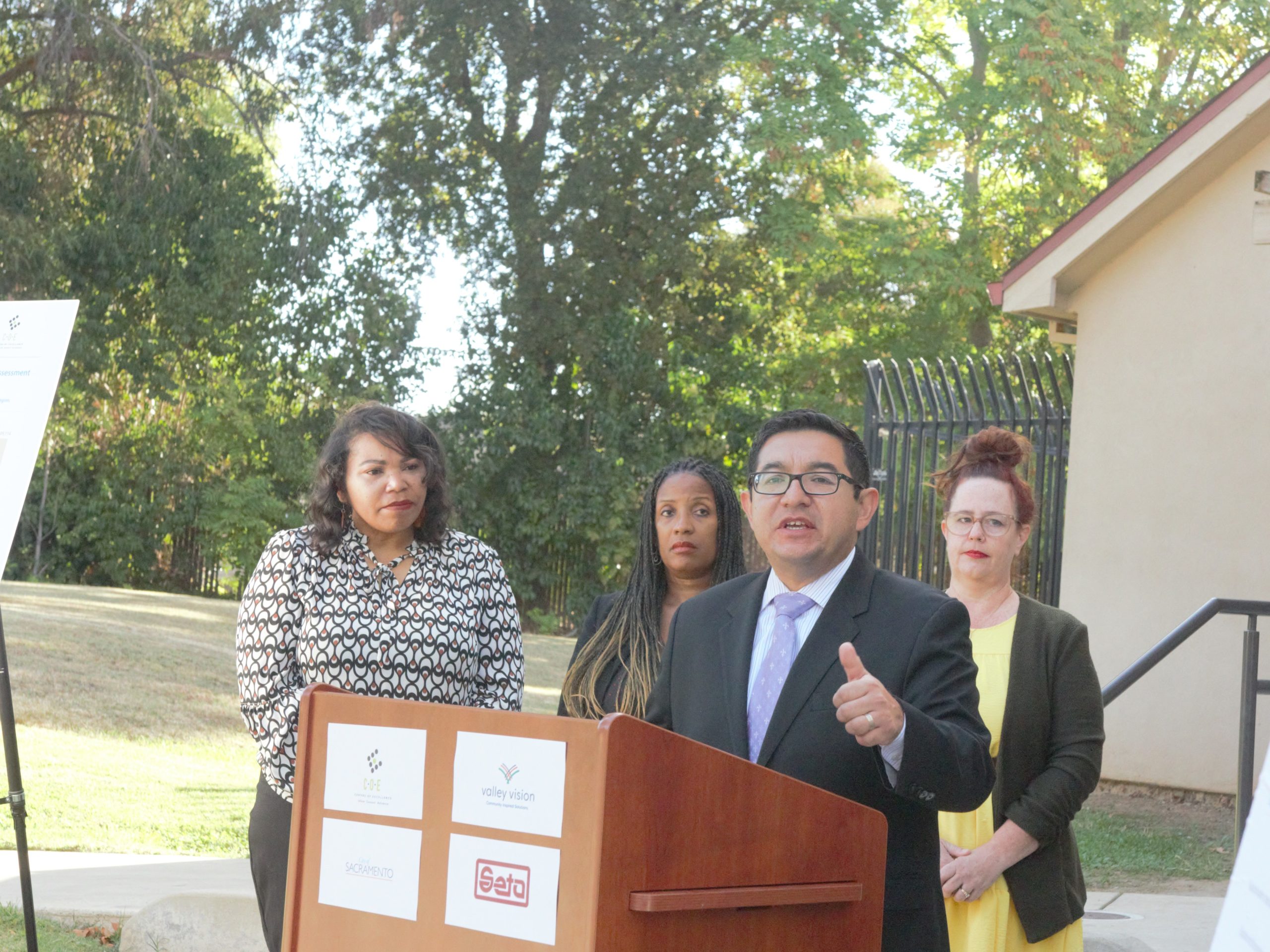
The report also found inequities in demographic representation across the ECE workforce, with 70% of child care workers and teachers coming from non-white backgrounds, predominantly Latina. Nonwhite groups were underrepresented in supervisory positions within the industry (40%). Additionally, 80% of the family child care home workforce and 52% of center teachers are age 40 and older, making retirements a concerning threat and strategies to attract younger workers more important.
The report sets forth recommendations to address our region’s critical early childhood education workforce shortage. “High quality early childhood education is a crucial support for young children, yet this report shows how we are not meeting the needs of our region. The report, through its findings and recommendations, makes clear that we need to both address job quality and working conditions alongside expanding educational pathways and professional development for child care workers,” shared Kevin Ferreira van Leer, Associate Professor of Child and Adolescent Development at Sac State.
Valley Vision is hosting a virtual conversation that will include a deeper dive into this topic on December 6th from 12:30 – 2:00 PM. This event will include a presentation of key findings and recommendations from the recently released report and a panel discussion to including representatives from Head Start, Sacramento County Office of Education, City of Sacramento, Sacramento State’s College of Education, and others.
###
Media Contact: Priya Kumar priya.kumar@valleyvision.org (707) 386-8501
About the Report: The City of Sacramento and the Sacramento Employment and Training Agency (SETA) convened the Early Learning and Child Care Task Force to coordinate efforts and address issues in the ECE industry. A working group within the task force commissioned the Center of Excellence for the Greater Sacramento region and Valley Vision to undertake a study that illuminates major issues facing the early childhood education workforce in Sacramento County and the Sacramento region. The report complements data and recommendations provided by the 2017 Sacramento County Board of Education Early Learning Road Map, and the 2019 City of Sacramento Strategic Plan to Increase Access to child care and Early Learning.
About Valley Vision: For more than 25 years Valley Vision has used research to help governments, businesses, foundations and community groups better understand the issues facing our region. We believe that knowing and understanding the facts is the best way to establish a common working foundation for collaborative problem-solving. To that end, Valley Vision conducts, produces and interprets research including scientific public opinion polls, focus groups, community needs assessments, best practice studies and other research tools to bring to light the information local leaders need to improve our communities.
About Centers of Excellence: The Centers of Excellence (COE) for Labor Market Research deliver regional workforce research and technical expertise to California community colleges for program decision making and resource development. The Centers of Excellence Initiative is funded in part by the Chancellor’s Office, California Community Colleges, Economic and Workforce Development Program. The Centers aspire to be the leading source of regional workforce information and insight for California community colleges.
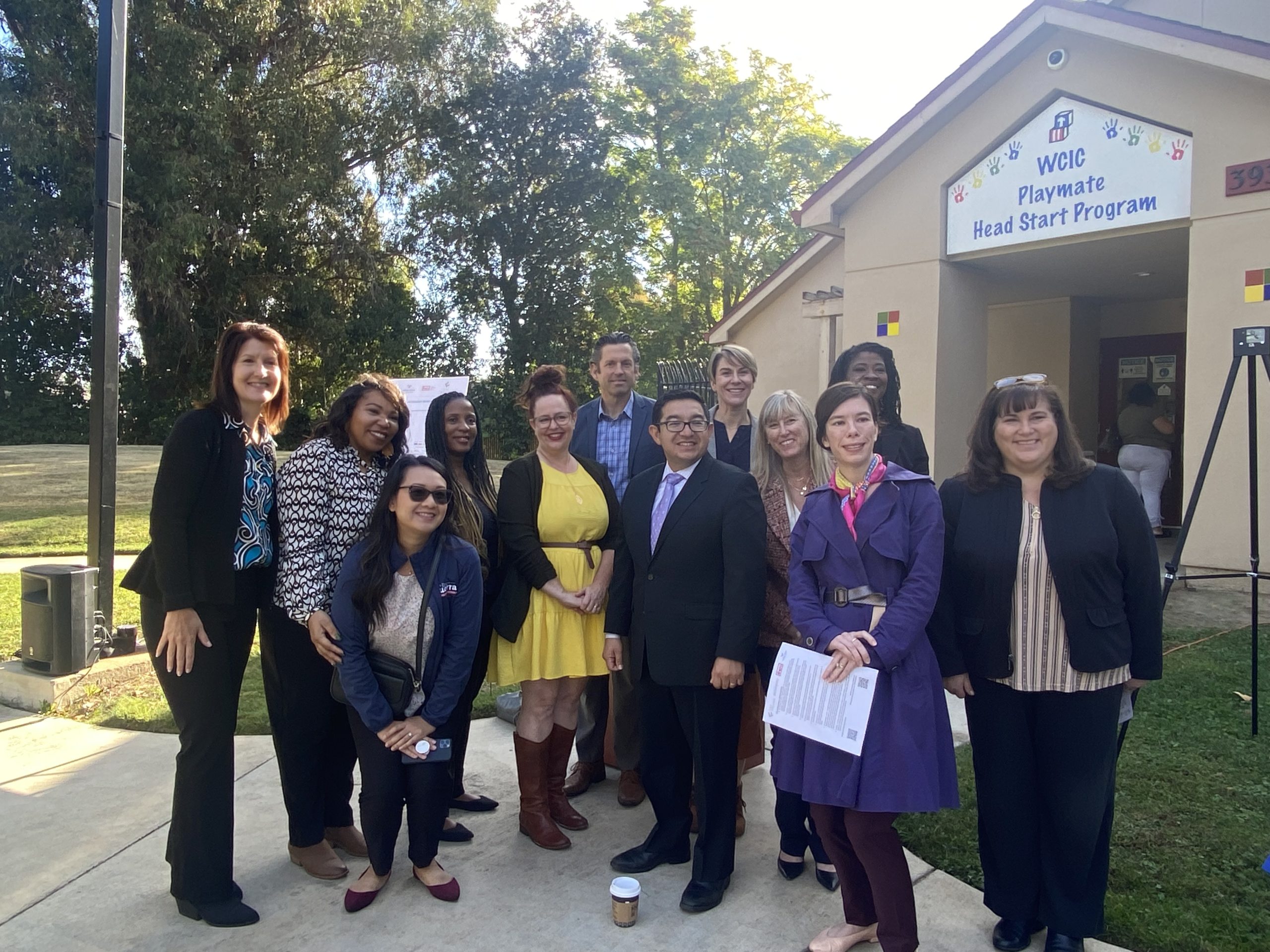
Seven Leaders Join Valley Vision Board in 2021
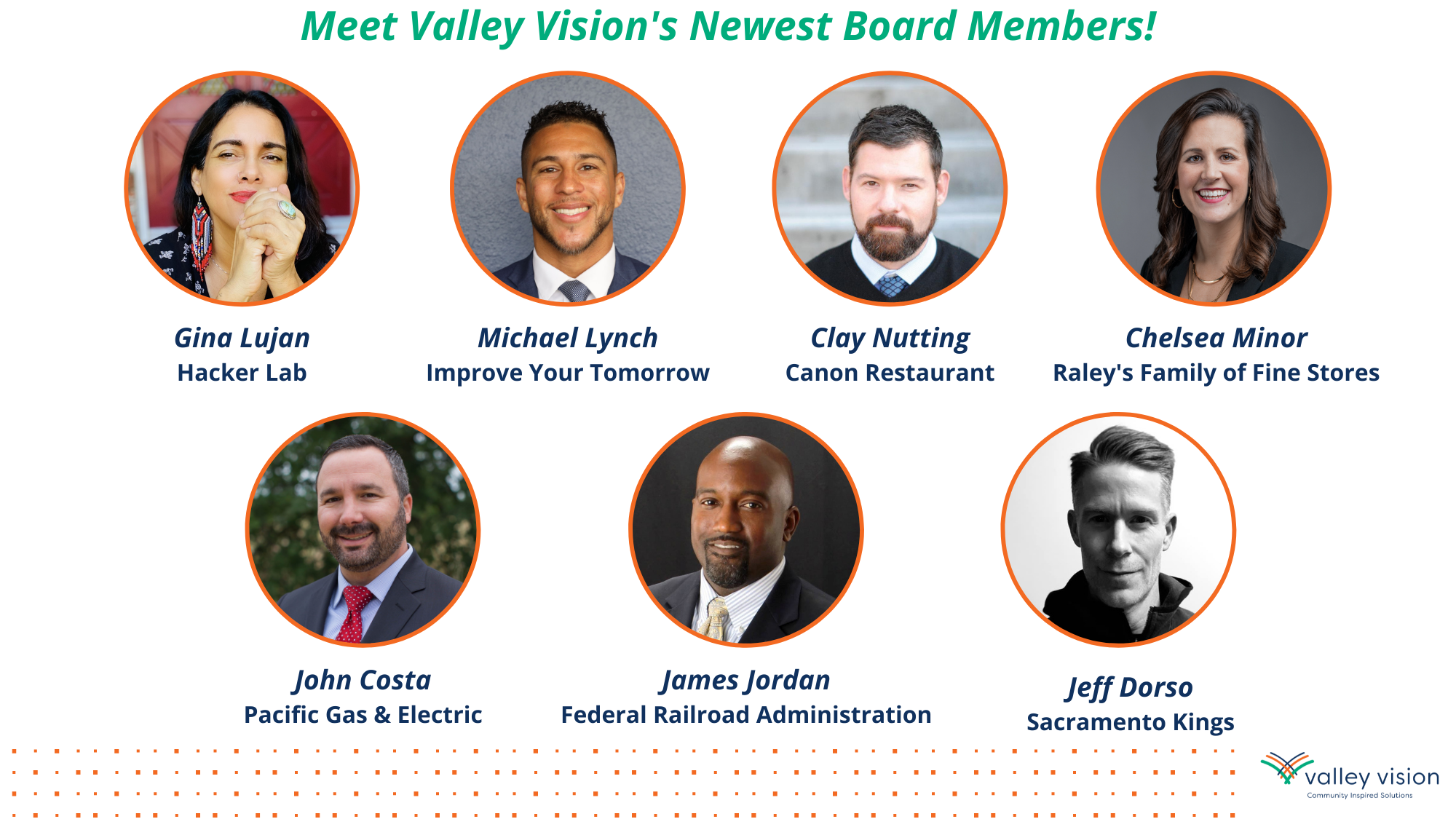
I am thrilled to share the news that seven truly outstanding local leaders have joined our organization’s Board of Directors in recent months, each who uniquely compliments Valley Vision’s core focus areas of workforce, innovation, food systems, civic engagement, and healthy communities. These individuals join an already impressive slate of directors who are committed to helping build a better future for our region.
Valley Vision is a unique organization with a special purpose: to make our communities the most livable in the nation. That’s why our board is composed of a diverse set of dynamic leaders who rely on Valley Vision’s independent research to identify current and future opportunities and to help solve complicated issues affecting quality of life through regional action. Their priority is to place the region’s future first and I am pleased to introduce you to them.

Meet Valley Vision’s 2021 slate of board members:
Chelsea Minor is Corporate Director of Public Affairs for Raley’s, an innovative, regional, family-owned grocery chain with stores founded and headquartered in Sacramento that operates stores across Northern California and Nevada. Chelsea is Raley’s lead spokesperson and oversees the company’s public affairs and brand reputation strategies. Her breadth of knowledge and industry connections will be instrumental in guiding Valley Vision’s important work in the food system space.
Clay Nutting is the owner and operator of Canon, among only a small handful of local restaurants recognized last year in California’s Michelin Guide. Clay co-founded a grassroots effort called Family Meal at the onset of the pandemic, which involved over two-dozen local and independent restaurants that provided over 250,000 meals to vulnerable residents across Sacramento County. His efforts in the community centered on food insecurity are tightly aligned with Valley Vision’s food insecurity and food equity strategies.
Gina Lujan is a social entrepreneur with 28 years of experience focused on building community, business development, innovation, strategy, and economic development. She co-founded Sacramento’s Hacker Lab in 2012, one of the city’s first local maker and coworking spaces that supports innovation through community-driven education and maintains a commitment to tangible access for all. Gina’s energetic entrepreneurial spirit and passion for education, opportunity, and advancement within underserved communities gives Valley Vision’s board a means for broader conversations and planning for strategies that support vulnerable populations.
James Jordan is a seasoned public service leader with a career in the transportation industry that spans over 25 years. He currently serves in the Federal Railroad Administration as Railroad Administrator and is responsible for the safety and operational oversight for every commuter railway located west of the Mississippi River. As an integral leader in the FRA, James works with the US Department of Transportation to promote and enforce safety throughout the U.S., including the rehabilitation of rail passenger services, supporting research and development, and advancing transportation for passengers and the general public. James’ boundary-breaking leadership at the FRA as well as his long-term commitment to the Sacramento region will support Valley Vision’s mission of equity, prosperity, and sustainability.
Jeff Dorso is the Senior Vice President and General Counsel for the Sacramento Kings, overseeing all legal and real estate development-related matters for the Sacramento Kings and its related companies, including the LEED Platinum Golden 1 Center, all real estate and media holdings, Sacramento Kings Guard (the NBA 2K eSports team), the Sacramento Kings Foundation, and the Stockton Kings (the NBA G League team). Jeff’s leadership in shaping development in Sacramento as well as his action-oriented mindset will help push Valley Vision towards effective and responsive action that supports the prosperity of our region.
John Costa, Senior Manager of Government Relations & Local Public Affairs for Pacific Gas & Electric (PG&E) Company in Northern California, works with community leaders and organizations throughout California, supporting PG&E lines of business and overseeing the day-to-day operations of various projects and company initiatives. John’s long history of engagement with government agencies and community based organizations as well as his commitment to healthy and sustainable communities will help Valley Vision support clean and sustainable communities for our region.
Michael Lynch, Co-Founder and Chief Executive Officer of Improve Your Tomorrow, is a social entrepreneur and certified professional fundraiser. As Valley Vision continues to seek workforce development solutions that answer a growing inequity gap across our most vulnerable communities, Michael’s work to improve academic outcomes for “at-promise” young people and transform systems that have historically failed communities of color will be especially valuable.
To keep up with Valley Vision’s work to advance livability in the Sacramento region, subscribe to our Vantage Point email newsletter!
Evan Schmidt is Valley Vision’s Chief Executive Officer.
Air Quality Data Now Monitored in Sacramento Frontline Neighborhoods
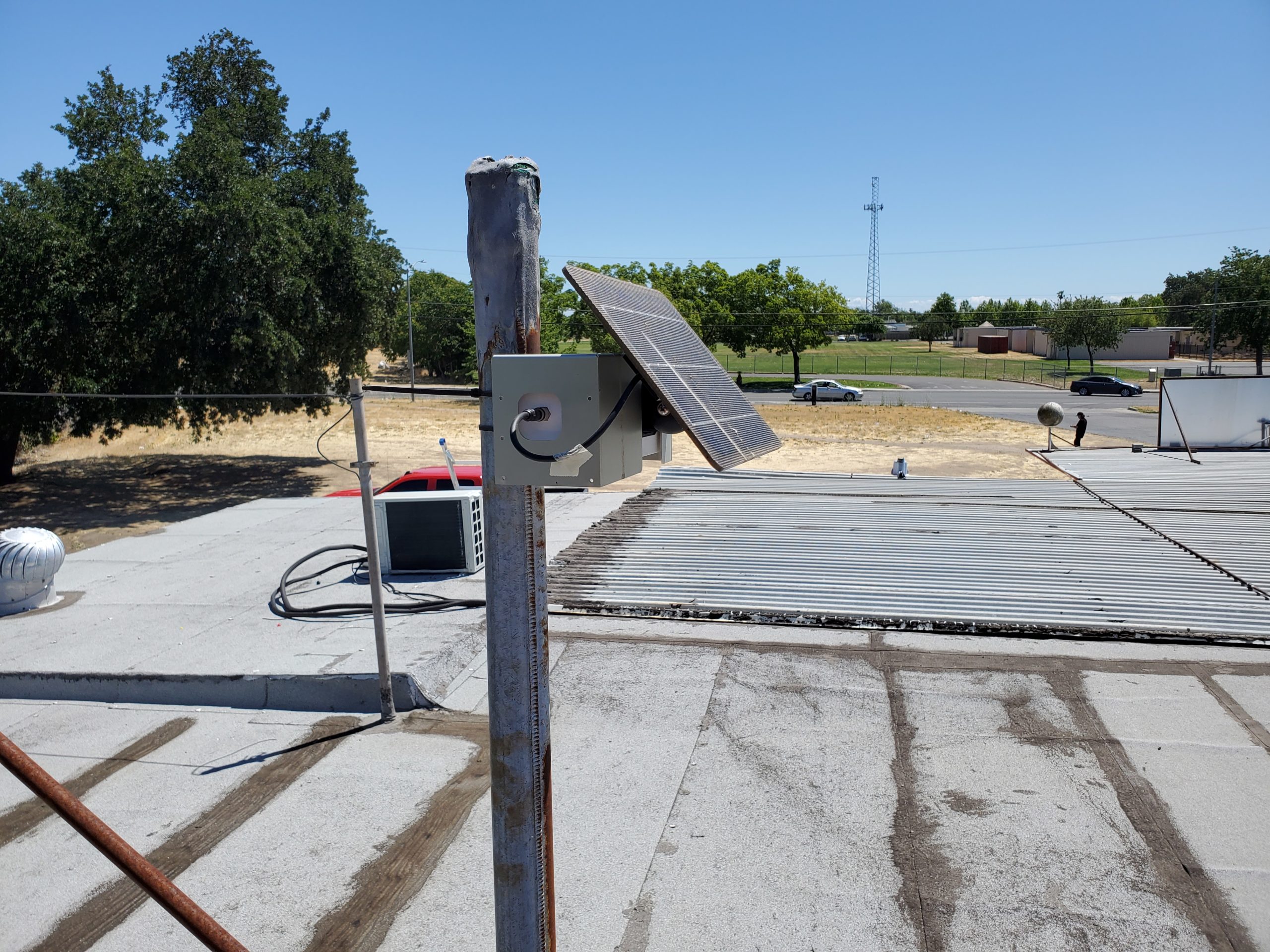
Over 20 air quality monitors being installed on rooftops by community groups in North Sacramento and Oak Park to collect needed data.
SACRAMENTO, CA – JUNE 29, 2021: Efforts to advance environmental justice for frontline Sacramento neighborhoods reached an important milestone with the launch today of a new public data portal that offers live readings from more than 20 rooftop solar-powered air quality monitors. The equipment is part of a larger grant from the California Air Resources Board (CARB), awarded in 2020 to the Sacramento Neighborhoods Activating on Air Quality coalition (SNAAQ).
“Sacramento suffers from serious air quality and public health challenges,” said Patrick Guild, Chief Operating Officer of Breathe California Sacramento Region. “But there are some neighborhoods like North Sacramento and Oak Park that have long been air monitoring ‘deserts’ and we have very little understanding of how poor the air quality may be for residents living in those communities.”
CARB’s Community Air Protection program is meant to help residents of high pollution-burden communities better understand air quality conditions at a block-by-block level and to address environmental injustices. The rooftop monitors measure particulate matter (PM 2.5) and NOx, two types of pollution that cause adverse health impacts that disproportionately fall on communities of color who generally live where pollution concentrations are highest. The new air monitoring equipment is now collecting and transferring data to a public portal, giving residents and advocates a much better understanding of the conditions in these neighborhoods. The data will be evaluated and ultimately will help residents determine future actions and needed investments.
“I think about the generations before and after me, from a researcher’s point of view, and I wonder how many have asthma, allergies, and other health conditions based on factors from their zip codes,” said Nykchasia S. Scott, MSSW, a North Sacramento resident and part of the all-resident committee who determined air monitor locations.
The SNAAQ coalition is comprised of area nonprofits Valley Vision, WALKSacramento, Breathe California Sacramento Region, and Green Tech Education, in partnership with neighborhood residents and clean air advocates who are working together to identify priorities for action that could likely include securing additional funding for clean air projects in our local communities and advocating for new statewide policies and regulations that reduce air pollution.
“This project is fundamentally about ensuring that all residents in our communities are afforded the basic rights to live, work, go to school, play, and pray in a safe, healthy, and clean environment,” said Kiara Reed, Executive Director of WALKSacramento. “We are providing the tools and information that these frontline communities need to adequately and proactively address air quality concerns in their own neighborhoods.”
###
About Valley Vision: For more than 25 years Valley Vision has used research to help governments, businesses, foundations and community groups better understand the issues facing our region. We believe that knowing and understanding the facts is the best way to establish a common working foundation for collaborative problem-solving. That’s why Valley Vision conducts, produces and interprets research including scientific public opinion polls, focus groups, community needs assessments, best practice studies and other research tools to bring to light the information local leaders need to improve our communities.
About WALKSacramento: WALKSacramento is a nonprofit planning and advocacy organization that improves quality of life and health equity in the Sacramento Region through community-centered policy and systems change in land use, transportation, and community development. For the last 20 years, WALKSacramento has worked closely with residents and community partners in institutionally underserved communities to empower community voices and co-create healthier, more equitable, and sustainable neighborhoods for all.
About Breathe California Sacramento Region: Breathe California Sacramento Region is an air quality and tobacco cessation-focused nonprofit that has served Sacramento for more than 100 years. Recognizing the significant impact that lung health has on the overall health of all communities in the Capital Region, Breathe has prioritized two significant areas of lung health in its mission: improving environmental air quality and eliminating commercial tobacco use through meaningful community engagement, enriching educational efforts, strategic partnerships, innovative programming, and effective advocacy.
About Green Tech Education: Established in 2008, Green Tech is committed to providing career technical education, job creation, job training, and entrepreneurial opportunities in the green economic sector. The program serves as a critical economic development resource for youth from underprivileged backgrounds. Green Tech is charged with simultaneously developing clean energy workforce skills and reversing the negative human impact on our environment.
New Study of Region’s Food System – and Prevailing Gaps – to Launch
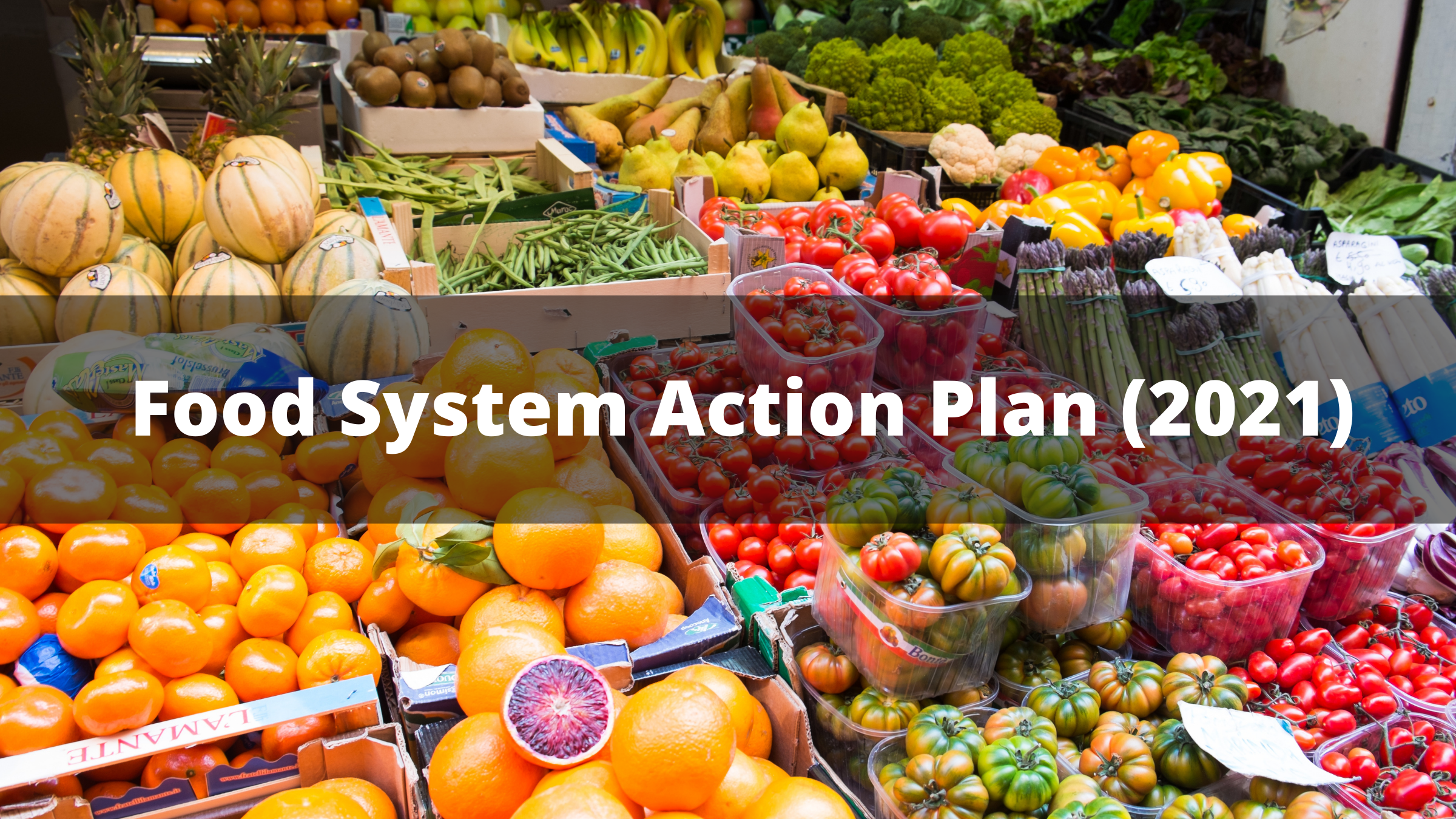
SACRAMENTO, CA – MAY 19, 2021: The Sacramento Region Community Foundation (Foundation) and Valley Vision announced today a new research study being jointly launched on the region’s food economy and prevailing gaps in the greater Sacramento region’s food system. The research will inform recommendations for investment strategies to strengthen the region’s food system capacity and resiliency.
“The region’s food system is dynamic and complex,” said Linda Cutler, CEO of the Sacramento Region Community Foundation. “While the overall food economy has advanced in recent years through dedicated efforts like new job creation, workforce programs, institutional procurement, and food literacy, disparities persist around food access, security, and system capabilities that have been further exacerbated by the COVID-19 pandemic.”
The study will build upon earlier work highlighted in the Sacramento Region Food System Action Plan (FSAP), a seminal study conducted by the Foundation in partnership with Valley Vision in 2015. The FSAP laid the building blocks for a regional roadmap and identified an actionable role for the Foundation that it has worked to implement since.
Valley Vision conducts public opinion polls in partnership with the Institute for Social Research at Sacramento State and will field this new poll in June to collect data on residents’ experiences, perceptions and needs related to accessing food. The Food System poll, in addition to other engagement and data inputs, will provide the Foundation with invaluable information that will be used to update the 2015 FSAP.
“The ultimate goal of this research is to ensure the viability of the food and ag economy at all scales,” said Valley Vision CEO Evan Schmidt. “This includes increasing the amount of locally grown food distributed within the regional food system, increasing access to fresh, affordable produce, especially in underserved communities, and increasing consumption of healthy foods through access to nutrition education.”
The research findings will support meaningful collaborations among food system partners and improve alignment of system activities and investments. Findings will also help identify compelling short- and longer- term priorities and establish a baseline for future progress.
“This is incredibly important work for our region,” said Kate Stille, Sacramento Region Community Foundation Board Chair and Chief Impact Officer for Nugget Markets, Inc. “We can point to real and tangible results born out of the 2015 FSAP, which has dramatically improved food security in underserved communities by strengthening the emergency food distribution network.” The 2015 FSAP inspired a partnership between the Foundation and Sacramento Food Bank & Family Services to form the Neighborhood Food Access Networks, which today serve hundreds of thousands of people by networking together more than 200 emergency food distributors across Sacramento neighborhoods.
The work to strengthen the food system is all-the-more critical given the COVID-19 pandemic, which greatly impacted health and economic disparities in the local community. High unemployment has increased the level of need for food. Local food banks, schools, restaurants, and many others have created new distribution mechanisms to respond to the crisis. The FSAP is a blueprint for action that will help shape these types of strategic initiatives, as well as to inform local leaders and the community on how to engage in meaningful solutions and catalyze investments in our vital food system.
“A systems approach centered on equity is needed,” said Schmidt. “Understanding food access and security issues is paramount to ensuring a health-promoting and accessible food system that can serve the needs of those who live in the region as well as those who benefit from our rich agricultural valley nationally and globally.”
The public opinion poll will go into the field in June and findings are expected to be published in September.
###
About the Sacramento Region Food System Action Plan (FSAP): FSAP was a seminal study conducted by the Foundation in partnership with Valley Vision in 2015 and provided a common framework along with integrated goals, strategic priorities, and recommended actions to strengthen the food system for the region. Intended to serve as a roadmap for food system development, function, and investment, the FSAP identified several disconnects in the food system, including the gaps between great food abundance and a vibrant economic sector, high levels of food insecurity, poor food-related health outcomes, and missed opportunities for local food sourcing and markets.
About the Sacramento Region Community Foundation: For over 35 years, the Sacramento Region Community Foundation has been the capital area’s trusted steward of charitable assets and champion for impactful philanthropy. The Foundation’s mission is to transform the capital area through focused leadership and advocacy that inspire partnerships and expand giving.
About Valley Vision: For more than 25 years Valley Vision has used research to help governments, businesses, foundations and community groups better understand the issues facing our region. We believe that knowing and understanding the facts is the best way to establish a common working foundation for collaborative problem-solving. That’s why Valley Vision conducts, produces and interprets research including scientific public opinion polls, focus groups, community needs assessments, best practice studies and other research tools to bring to light the information local leaders need to improve our communities.
COVID-19 Imposed Inequitable Hardships on People of Color and Younger Adults, Latest Public Opinion Poll Reveals
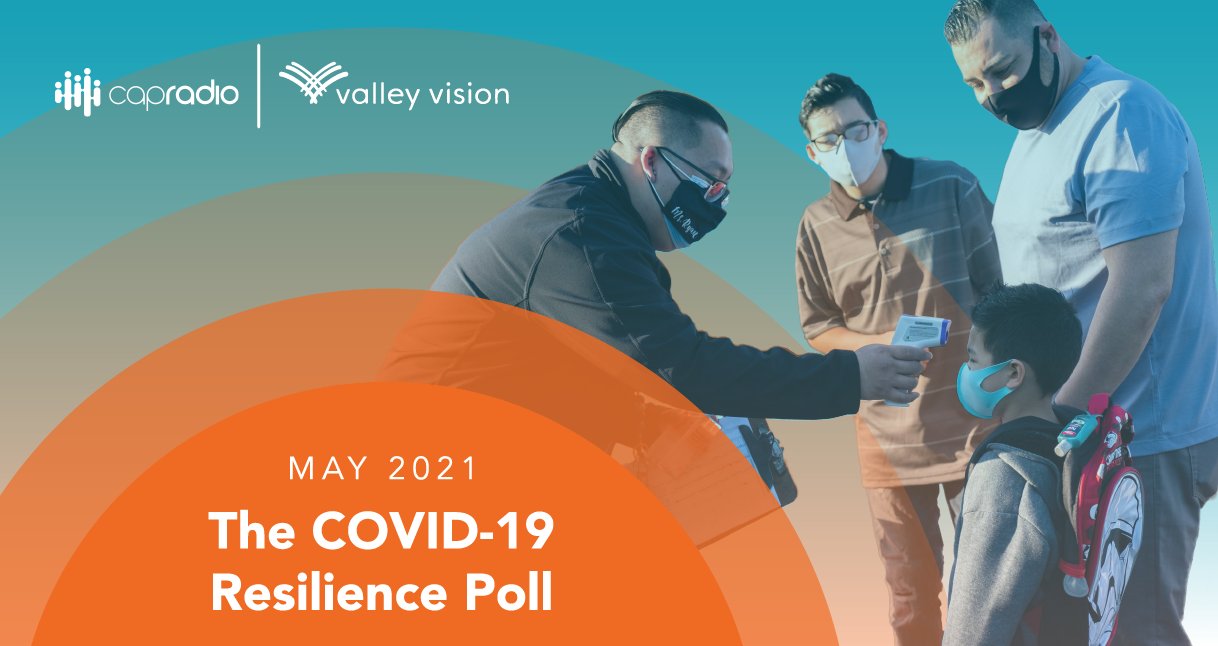
Sacramento, CA – May 10, 2021: Three public opinion polls fielded through a year of the COVID-19 pandemic from May 2020 to March 2021 revealed that the health crisis had a significant impact on the financial and emotional well-being for many. Communities of color, those earning less, and those who are younger, have been more severely impacted than others, experiencing greater income loss, more difficulty affording basic necessities, and deeper fears and concerns about financial security and mental health.
Valley Vision and CapRadio released today the third and final COVID-19 Resilience Poll, which was fielded by the Institute of Social Research (ISR) at Sacramento State between March 12-29, 2021. The research is demographically representative of the Capital region, encompassing Sacramento, El Dorado, Placer, Sutter, Yolo, and Yuba counties, with a margin of error of +/- three percent.
“The latest report highlights clear themes that emerged from polling over a year of the pandemic.” said Valley Vision CEO Evan Schmidt. “The impact is expected to be felt for years to come and will likely signify historic shifts in our social, political, and economic landscape. The findings point to the unique challenges our region now faces and where we most need to focus system change to build an equitable recovery.”
The research findings show the greatest hardships were felt by vulnerable communities. In the most recent poll, 41% of respondents overall reported a loss of income during the pandemic. For Black, Hispanic, and Asian/NHPI respondents, that number is much higher.
“The three surveys in the past year make it clear that vulnerable communities feel even more vulnerable because of the pandemic,” said Nick Miller, managing editor of news and information at CapRadio. “Our journalists will be looking deeply at these issues on CapRadio this week.”
These findings are consistent with what is taking place across the United States. A study conducted by the Pew Research Center in April 2020 found that 26% of middle-income adults and 53% of lower income adults could not pay their bills in full that month. Only 23% of lower income adults and 48% of middle-income adults reported having “rainy day funds” that would cover expenses for three months in case of an emergency, compared to 75% of higher income adults.
“In addition to the toll taken on lives, overall well-being, and jobs, one constant throughout the pandemic has been the rapid-response system transformation,” Schmidt said. “Valley Vision and CapRadio publicize these findings to help local leaders shape future social, civic, and economic structures to help make all of our communities inclusive, supported, safe, and equitable.”
TOP COVID-19 RESILIENCE POLL LEAD FINDINGS:
Financial hardship: Communities of color, those earning less, and those who are younger experienced greater income loss, more difficulty affording basic necessities, and deeper fears and concerns about financial security.
- 54 to 61%of those with significantly reduced income couldn’t afford an adequate food supply throughout the year.
- 59 to 68% said they couldn’t afford rent or mortgage.
- 39 to 47% of 18- to 39-year-olds said they couldn’t afford to pay down debt.
Workplace: The circumstances of the pandemic spurred a seemingly ten-year acceleration of new workplace trends toward remote work, automation, and e-commerce.
- The percent of people who work from home either part or full time shot up from 38% prior to the pandemic to 70% during the pandemic.
- 78% said they want to work at home at least one day a week; 28% said that they want to work at home full time.
- By larger margins, 18- to 38-year-olds believe the pandemic has made them less employable due to concerns over availability of jobs, changes in their industry, and their skillset.
Mental and Emotional: The pandemic created significant increases in depression, anxiety and stress, concerns about substance use, and concerns about physical and emotional violence at home.
- The likelihood of experiencing stress or anxiety, or depression or hopelessness decreased as income level increased.
- 92% of Hispanic respondents reported feelings of stress or anxiety at least one day in the last seven days, followed by 85% of Asian/NHPI respondents, and 82% of Black respondents.
- Respondents who are white were least likely to have experienced these feelings (52%).
Education: A year of educating from home has been difficult on parents, students and teachers, with more than two-thirds of parents reporting concerns about their children falling behind academically.
- In May 2021, 79% of those with children said they were doing some kind of remote learning.
- 54% of parents were more likely to have lost income, compared to 34% of non-parents.
- 71% of parents reported being concerned about their ability to handle other responsibilities.
- 69% of parents said having children in school partly or fully remotely was negatively affected their ability to do their job.
Beyond COVID-19: The last poll found that vaccination skepticism is likely to impact our region, with 39% of respondents stating that they would probably not or definitely not get a COVID-19 vaccination when it becomes available to them.
- Black respondents were significantly more skeptical than other race/ethnicities, with 65% reporting they probably or definitely would not get a vaccine, compared to 44% of white, 29% of Hispanic, and 15% of Asian/NHPI respondents.
- 71% of respondents reported knowing someone who had COVID-19.
###
About the Polling Series Valley Vision and CapRadio, in partnership with the Institute of Social Research (ISR) at Sacramento State, conduct research via scientifically administered surveys of area resident attitudes. The survey data inform policy-makers and stakeholders on key regional issues by providing on-the-ground public engagement data. The approach used is highly effective and unique by establishing a scientifically valid and demographically representative panel of regional residents that reflects a microcosm of the region as a whole. The panel size is consistently about 2,000 people from six counties – Sacramento, Yolo, El Dorado, Placer, Yuba, and Sutter. The panel is weighted to demographically represent the region and each survey achieves a statistical valid margin of error of not more than +/- 3%.
About Valley Vision For more than 25 years Valley Vision has used research to help governments, businesses, foundations and community groups better understand the issues facing our region. We believe that knowing and understanding the facts is the best way to establish a common working foundation for collaborative problem-solving. That’s why Valley Vision conducts, produces and interprets research including scientific public opinion polls, focus groups, community needs assessments, best practice studies and other research tools to bring to light the information local leaders need to improve our communities.
About Sacramento State’s Institute for Social Research ISR supports community partners in improving programs and policies in the region and throughout the state. Located at the university’s downtown location, the Institute offers a broad range of expertise conducting surveys and applied research. Since 1989, our collaborations with government agencies and nonprofit organizations have contributed to public accountability, program fidelity, and the strengthening of communities.
About CapRadio CapRadioserves California’s Capital Region, Central Valley and Sierra Nevada as the public-supported alternative to for-profit media. As the NPR-member station based in Sacramento, CapRadio connects with communities through seven broadcast stations, live streaming, podcasts, digital communities, live experiences and more. Known for its award-winning newsroom, CapRadio is recognized as a leader in community-engaged journalism and state government reporting, and CapRadio Music is the exclusive broadcast source of classical and jazz in the region. With more than 500,000 weekly listeners on-air and online, CapRadio provides a trusted and indispensable source of information, music and events.
Covid-19 Is Taking a Toll on the Capital Region, Recent Regional Poll Reveals
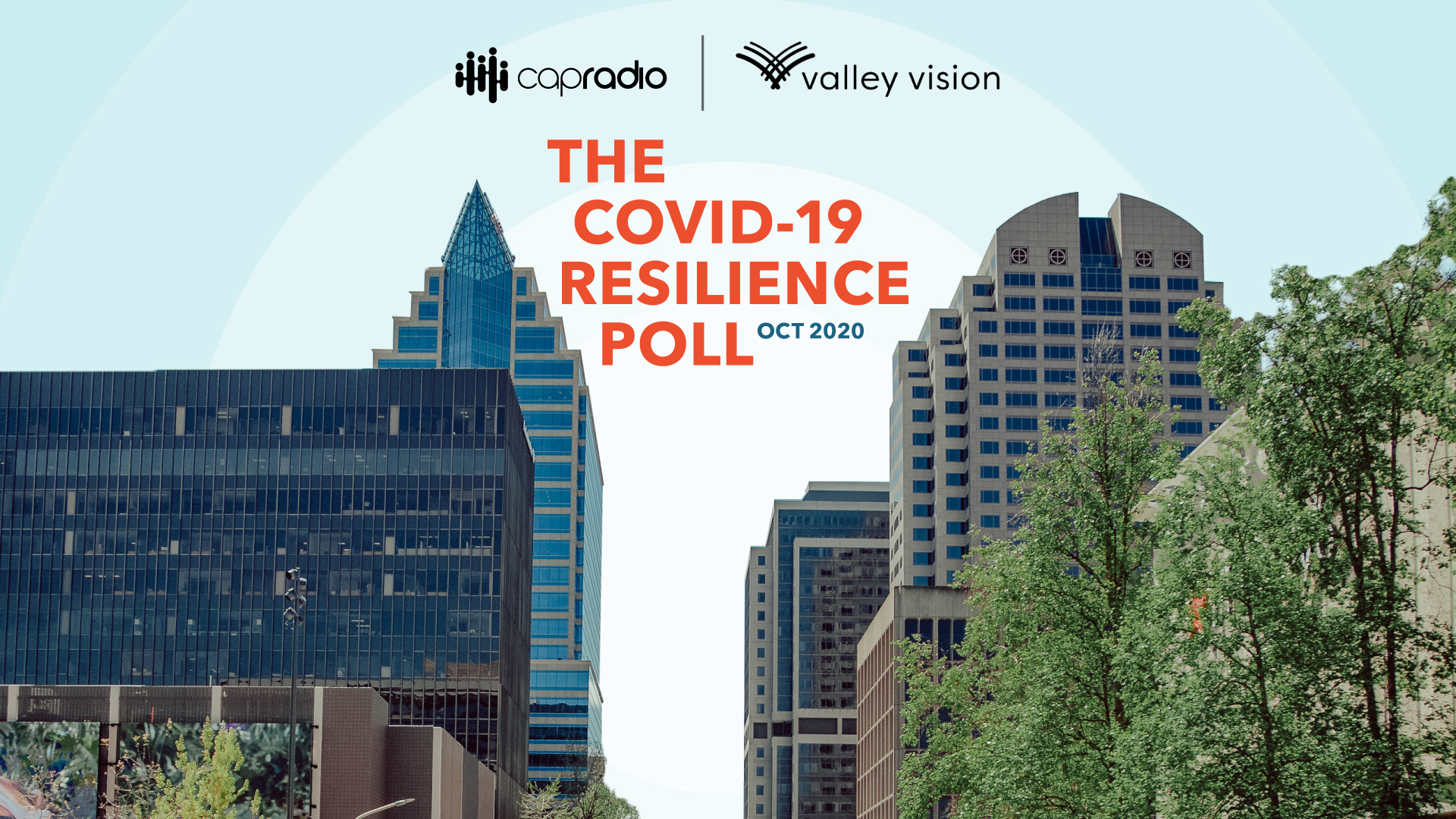
October 20, 2020 – Valley Vision has published the second COVID-19 Resilience Poll this week in partnership with Capital Public Radio. This polling report is focused on understanding experiences, impacts, and attitudes about COVID-19 from residents in our region, and was conducted by the Institute for Social Research at Sacramento State. The COVID-19 Resilience Poll is a demographically representative survey of the eight-county region (Sacramento, Yolo, El Dorado, Placer, Yuba, Sutter, Solano, and San Joaquin) and reported a margin of error of +/-3%. You can find the full COVID-19 Resilience Poll here.
“This survey is the second in our series of three COVID-19 polls. This poll, and the others in the series, tracks how the experiences, perceptions, concerns, and hopes of people in the Capital region are being affected by the COVID-19 pandemic,” noted Evan Schmidt, CEO of Valley Vision. “Having this detailed, data-driven insight about COVID-19’s ongoing impacts on the people and communities we serve is vitally important to our public service mission,” said Jun Reina, executive vice president and general manager of CapRadio, of the partnership with Valley Vision.
The poll results reflect the hardship being felt across the region in the truly hard time we are going through — threats to physical, mental, and emotional health and well-being; income loss and job instability; division in our views about the state of things; and the uncertainties of the future. In most cases, data reported in the first poll, published in July, has continued or worsened in the months since then. For example, nearly half of respondents to this poll said they had lost income as a result of the virus; the same was true in July.
As well, different communities continue to experience markedly different realities. People of color, younger adults, and those earning lower incomes are more likely to have lost income, to report mental health challenges, and to find it very difficult to have children schooling from home, among other impacts. “These disparities are consistent with the data from the first poll, as well as what’s being reported nationwide about what COVID-19 is causing, and the ways in which it’s worsening existing inequalities in our communities,” noted Shannon Williams, executive director of the Institute for Social Research.
Political polarization within the region has increased compared with the first poll. Many respondents are dissatisfied with leadership at various levels, and for different reasons, and that dissatisfaction has grown, and is also more likely, now, to extend to the local level, including local governments, local media, and local businesses.
This poll also reveals evidence of fatigue, including decreases in emotional resilience, diminished trust in institutions, and also declines in some precautionary actions related to COVID. These results may point to people’s fatigue with isolating and also to the daily challenges of the added complexities of life during COVID.
The detailed poll results are accessible in several ways:
- As of today, the complete poll report can be downloaded from Valley Vision’s website: https://www.valleyvision.org/resources/the-covid-19-resilience-poll-2-fall-2020/
- Ongoing coverage from CapRadio can be found at https://www.capradio.org/resilience
- On October 30, Valley Vision will host a webinar providing an overview of the findings: https://us02web.zoom.us/webinar/register/WN_HP97WQ2wT5yeEaMliMUqug
Additionally, Valley Vision’s polling partners have each issued their own press releases.
- CapRadio’s is available on their website: https://www.capradio.org/about/press/2020/capradio-and-valley-vision-release-october-2020-covid-19-resilience-poll-report/
- The Institute for Social Research’s is available on the Sacramento State website: https://www.csus.edu/news/articles/2020/10/20/Pandemic-taking-a-toll-on-family-life,-income,-survey-finds.shtml
About Valley Vision: For 25 years Valley Vision has helped governments, businesses, foundations and community groups better understand our region and its people through high quality research. By uncovering common ground facts using scientific opinion polls, focus groups, community needs assessments, best practice reports and other research tools, Valley Vision is a trusted interpreter, commentator, forecaster and work partner for community inspired solutions.
# # #
Regional COVID-19 Resilience Poll Reveals Local Community Stresses, Responses

July 15, 2020 – Valley Vision has published the COVID-19 Resilience Poll this week in partnership with Capital Public Radio. This polling report is focused on understanding experiences, impacts, and attitudes about COVID-19 from residents in our region. The COVID-19 Resilience Poll is a demographically representative survey of the eight-county region (Sacramento, Yolo, El Dorado, Placer, Yuba,Sutter, Solano, and San Joaquin) and reported a margin of error of +/-3%. You can find the full COVID-19 Resilience Poll here.
“This survey, and the two more to come in this series, will help us understand and navigate the challenges ahead as we aim to not just recover from the setbacks of COVID-19, but also reimagine a more equitable, sustainable, and just future,” noted Evan Schmidt, CEO of Valley Vision. “Having an in-depth understanding of how the coronavirus impacts the people and communities we serve is vitally important to our public service mission,” said Jun Reina, newly appointed executive vice president and general manager of CapRadio, of the partnership with Valley Vision.
The poll results identify the severe impacts on people in our communities – including their mental, physical, and emotional health; their daily life and routines; and their economic security. For example, nearly half of respondents said they had lost income because of fallout from the virus, which since March has shuttered many businesses and forced most people to stay at home.
Further, different communities are experiencing markedly different realities, with deep disparities in the intensity of concern and impact across different racial and ethnic lines. “We’re all in this together but we are experiencing it differently,” said Shannon Williams, director of the Institute for Social Research, pointing out that many “essential” and front-line workers are people of color and workers with lower incomes who cannot perform their jobs virtually and have higher risks of virus exposure. “Often in this country, people of color don’t have the same opportunities and resources as others,” Williams continued. “This data shows how that is playing out with regard to the pandemic.”
There is also a significant element of political polarization within the region, with many respondents critical of leadership at various levels – whether it is because they think that leadership has failed to deliver an effective response or because they think the response is over blown and creating more harm.
The detailed poll results are accessible in several ways:
- As of today, the complete poll report can be downloaded from Valley Vision’s website: https://www.valleyvision.org/resources/the-covid-19-resilience-poll/
- Ongoing coverage from CapRadio can be found at https://www.capradio.org/resilience
- On Thursday, CapRadio will host a virtual event focused on the impact of COVID-19 on communities of color: https://www.capradio.org/articles/2020/07/13/live-conversation-covid-19-communities-of-color
- On July 31, Valley Vision will host a webinar providing an overview of the findings: https://us02web.zoom.us/webinar/register/WN_Qlsn5_lKSy-b8LGt1GbgCw
Additionally, Valley Vision’s polling partners have each issued their own press releases.
- CapRadio’s is available on their website: https://www.capradio.org/about/press/2020/capradio-and-valley-vision-partner-to-launch-covid-19-resilience-poll/
- The Institute for Social Research’s is available on the Sacramento State website: https://www.csus.edu/news/articles/2020/7/15/Pandemic-has-disrupted-life-in-the-region,-survey-finds-.shtml
About Valley Vision: For 25 years Valley Vision has helped governments, businesses, foundations and community groups better understand our region and its people through high quality research. By uncovering common ground facts using scientific opinion polls, focus groups, community needs assessments, best practice reports and other research tools, Valley Vision is a trusted interpreter, commentator, forecaster and work partner for community inspired solutions.
# # #